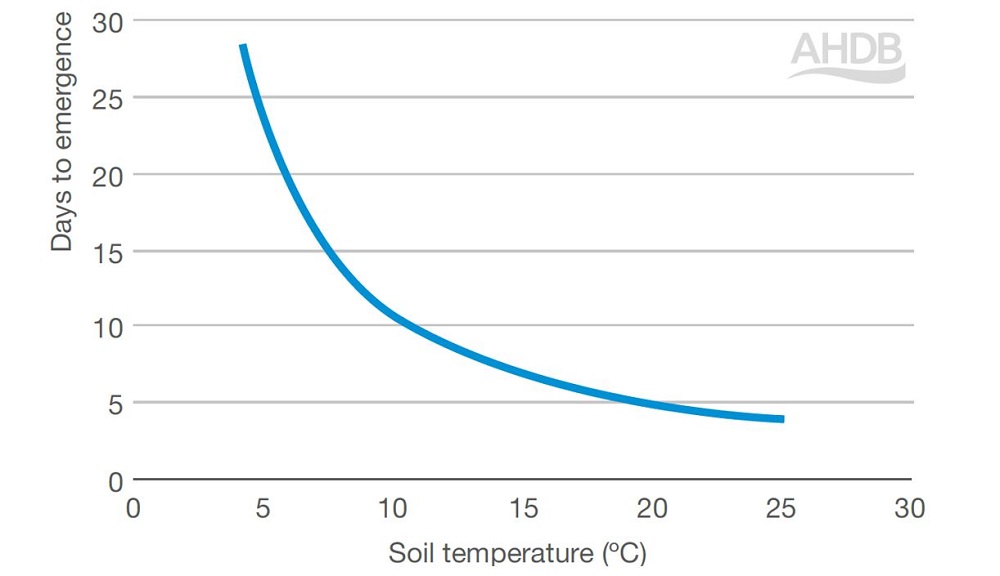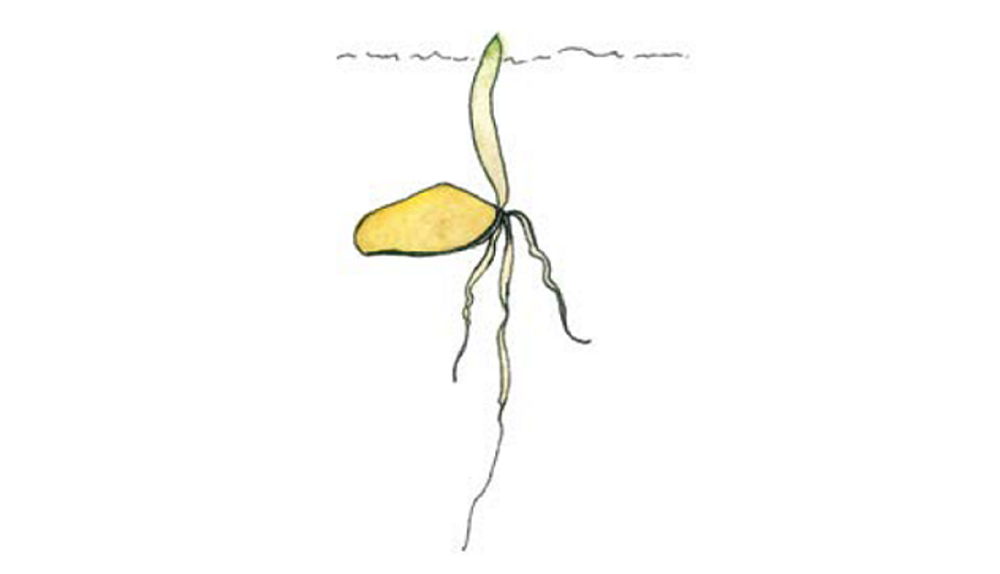- Home
- Knowledge library
- Establishment in barley: germination and emergence (GS0–GS2)
Establishment in barley: germination and emergence (GS0–GS2)
From the seed, to its germination and emergence, these first phases establish the barley crop and determine plant populations. Learn how to optimise these early growth stages, which are particularly critical in barley.
Growth guides for wheat, barley and oilseed rape
Barley establishment facts
- Barley has limited ability to compensate for reductions in seed rates
- Germination is driven by adequate soil moisture, temperatures above 0ºC and oxygen
- Speed of emergence is governed by soil temperature and sowing depth
- Overwinter survival can be highly variable, depending on the site and season
Germination in barley
If soil moisture, temperature and oxygen levels are adequate, seeds will normally germinate. Germination rate is then controlled directly by soil temperature.
Initially, water penetrates the seed coat (imbibition), softening the hard, dry tissues inside. Good contact between seed and soil speeds up water transfer, which is particularly important in drier seedbeds. Water uptake activates the embryo and allows plant hormones to be transported through seed tissues.
Very wet or near-saturated soil conditions reduce the oxygen diffusion rate. In such conditions, despite normal imbibition, oxygen becomes limiting and reduces germination.
The influence of sowing date on barley development
Benchmark: Thermal time to 50% emergence = 150ºC days
Varietal influence: Low
Other influences: Sowing depth, soil conditions, temperature, seed quality
Sowing date has the greatest influence on early crop development. Later-sown crops pass through their developmental stages faster and complete each stage more quickly than crops sown earlier. Typically, crops sown several weeks apart will mature within days of each other.
Temperature affects the rate of both germination and emergence – see figure, below.
 AHDB
AHDB
Thermal time
Accumulated mean daily temperature from sowing can be used to measure the ‘thermal time’ (ºC days) taken for crops to emerge.
At reference sites, crops reached 50% emergence in 150ºC days.
The thermal time to emergence was greater where dry soil limited germination.
In autumn, as daily temperatures decline, crops take longer to emerge but emergence accelerates as temperatures rise in spring.
In the South, the threshold of 150ºC days is reached sooner than in the North – see table, below.
|
*Mean of 30 years – Met Office data |
||
|
*Days to accumulate 150°C days |
||
|
Sowing date |
North (Aberdeen) |
South (Hereford) |
|
15 September |
13 |
11 |
|
15 October |
18 |
15 |
|
15 November |
34 |
25 |
|
15 December |
48 |
34 |
|
15 January |
48 |
35 |
|
15 February |
38 |
28 |
|
15 March |
28 |
21 |
|
15 April |
21 |
16 |
Winter barley
In an average season, winter barley crops sown after 10 October reach key developmental stages later than the benchmark date. Any differences diminish over the season. The window for sowing winter barley is narrower than for winter wheat. A low vernalisation requirement means barley is less suited to very early sowing, while yield declines faster when it is sown after mid-November.
Spring barley
Spring barley is typically sown from December until late April. The crop is relatively frost-sensitive, so early sowing is not common in the North. In a spring-sown crop, the three main phases (canopy formation, canopy expansion and grain filling) all last from six to eight weeks. Speed of development differs little between varieties. Some varieties produce fewer tillers, making them less suited to late sowing.
Seed rates, establishment and plant populations
Benchmark: 85% of seeds sown established
Benchmark: Spring population = 305 plants/m2
Varietal influence: Low
Other influences: Cultivations, seed treatments, sowing depth, soil conditions, temperature, pests
An estimate of cereal plant populations will indicate if target populations have been met.
How to measure plant and tiller populations
Winter barley
Compared to wheat, there is less scope for barley to compensate against low plant populations by increasing grain number in each ear, as each spikelet holds only one or three florets.
For hybrid barley varieties, lower seed rates are used than for conventional varieties, with approximately 200 seeds/m2 common. A target spring population for hybrids would be approximately 180 plants/m2.
Barley is generally more susceptible to overwinter plant loss than wheat. Overwinter survival is site-dependent.
Losses can occur from frost heave or waterlogging, as well as pests. Seedbed consolidation reduces the risk of frost heave. Winter hardiness ratings of winter barley varieties are given in the AHDB Recommended List.
Spring barley
Ideally, the seedbed for spring barley should be fine and well-drained.
Early sowing or poor seedbeds may lead to reduced establishment, but early-sown crops often tiller well to compensate.
In a good seedbed, typical plant establishment is between 80% (early-sown) and 95% (late-sown). In a poor seedbed, establishment can vary from 55% (early-sown) to 70% (late-sown). Late spring drought may reduce establishment further.
Spring barley is less winter-hardy than winter barley. Site selection is important when considering sowing spring barley early.
Seed rate
Spring barley, especially when drilled late, compensates less well than winter barley for reduced plant populations, so there is less potential to reduce seed rate.
Drilling late-sown crops (after optimal date) at an increased seed rate reduces the risk of low ear numbers from poor tillering or establishment.

Topics:
Sectors:
Tags:

